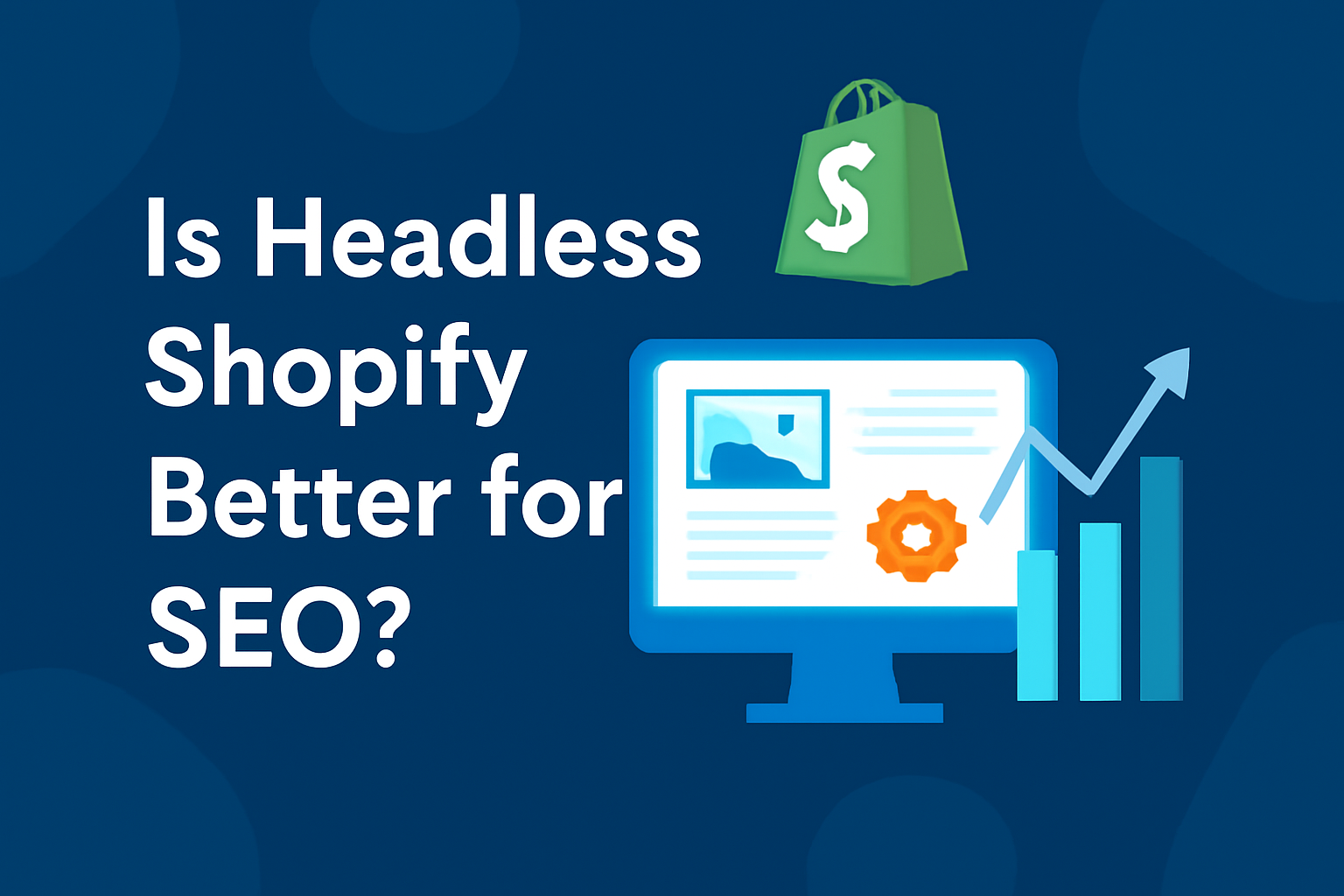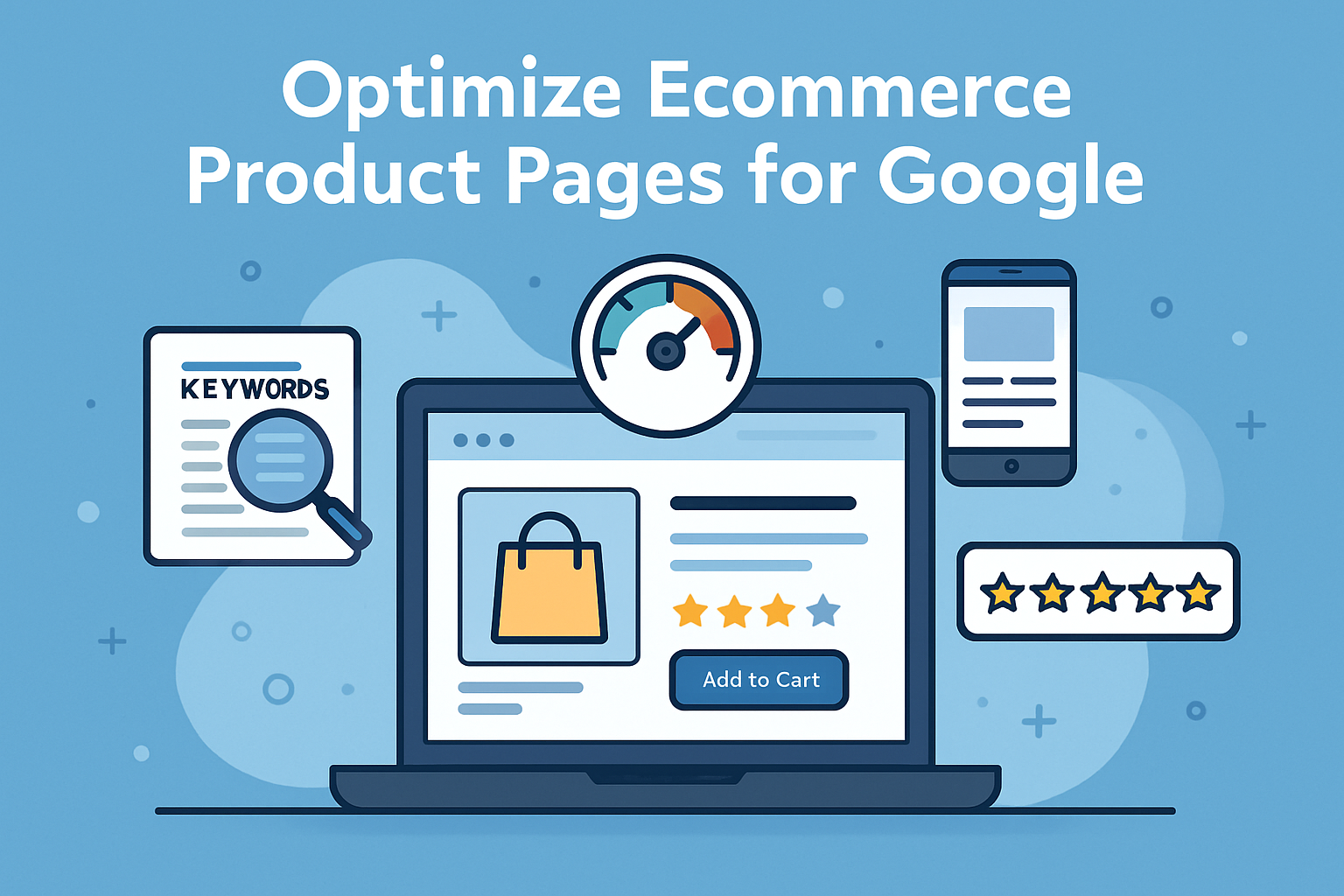Outline:
| Main Topic | Subtopics |
|---|---|
| Is Headless Shopify Better for SEO? | – Introduction to Headless Shopify and SEO |
| What is Headless Shopify? | – Definition and overview of headless commerce |
| Traditional Shopify vs. Headless Shopify | – Key differences and advantages of headless Shopify |
| SEO Performance in Traditional Shopify | – Built-in features for SEO |
| SEO Performance in Headless Shopify | – Flexibility and customization for SEO |
| How Headless Shopify Can Boost SEO | – Faster load times and improved user experience |
| Enhanced Page Speed and Core Web Vitals | – Google’s focus on page speed and its SEO impact |
| Customization of SEO Elements | – Tailoring metadata, URLs, and structure for SEO |
| Challenges of Using Headless Shopify for SEO | – Technical challenges and complexities |
| Resource Intensive Setup | – High development costs and time investments |
| Ongoing Maintenance | – The need for continuous updates and technical expertise |
| Case Studies and Real-World Examples | – Examples of successful headless Shopify stores improving SEO |
| Who Should Consider Headless Shopify for SEO? | – Identifying the right businesses and use cases |
| Conclusion | – Final thoughts on headless Shopify and its impact on SEO |
| Frequently Asked Questions (FAQs) | – Answers to common questions about headless Shopify and SEO |
Is Headless Shopify Better for SEO?
When it comes to running an online store, businesses are always on the lookout for ways to improve their search engine visibility. SEO (Search Engine Optimization) plays a crucial role in attracting organic traffic and increasing sales. One of the latest trends in e-commerce is headless Shopify, and it’s sparking a debate among digital marketers and business owners alike: Is headless Shopify better for SEO?
In this article, we’ll explore the potential SEO benefits and challenges of headless Shopify, comparing it with traditional Shopify, and help you decide if it’s the right choice for your business.
What is Headless Shopify?
Headless Shopify refers to a decoupled approach to e-commerce architecture, where the frontend (the “head”) is separated from the backend. In a headless setup, Shopify handles the backend functions like inventory management, order processing, and payments, while a custom frontend (often built with technologies like React, Vue, or Angular) displays the store to users.
This allows businesses to have greater flexibility and control over how their online store looks and operates. With the frontend and backend decoupled, the possibilities for user experience and site performance are virtually limitless.
Traditional Shopify vs. Headless Shopify
SEO Performance in Traditional Shopify
Traditional Shopify provides a built-in structure designed to handle the frontend and backend seamlessly. It includes several SEO features that help improve visibility, such as customizable meta tags, URLs, sitemaps, and image optimization. Shopify themes are SEO-friendly by default, offering good mobile responsiveness, optimized code, and fast load times out-of-the-box.
However, traditional Shopify’s customization options are more limited compared to headless Shopify. The platform is easy to use and doesn’t require much technical knowledge, making it a popular choice for businesses just starting out.
SEO Performance in Headless Shopify
Headless Shopify offers much more flexibility in terms of SEO. Since the frontend and backend are decoupled, developers can design a custom user experience, optimize page structure, and integrate advanced SEO strategies without the limitations of a traditional theme.
For example, in headless Shopify, businesses have full control over the layout, design, and speed of their site, allowing them to implement SEO best practices more effectively. You can optimize the site’s performance, create custom URLs, and modify metadata without constraints.
How Headless Shopify Can Boost SEO
Enhanced Page Speed and Core Web Vitals
Google has made it clear that page speed and overall user experience are crucial ranking factors, particularly with the introduction of Core Web Vitals. These metrics assess how well a site performs in terms of loading speed, interactivity, and visual stability.
Headless Shopify’s architecture allows for much faster load times compared to traditional setups. Since the frontend is decoupled, developers can optimize resources more efficiently, resulting in faster load times. Faster websites provide a better user experience, reduce bounce rates, and ultimately contribute to better SEO rankings.
Customization of SEO Elements
Headless Shopify allows for deep customization of SEO elements like meta descriptions, title tags, URL structures, and schema markup. In traditional Shopify, you can make these changes, but the level of flexibility is limited by the platform’s theme and structure.
With headless, you can implement a unique structure tailored specifically to your business needs. This means you can align the website structure with your SEO strategy, making it easier to rank for long-tail keywords, product-specific queries, and other niche targets.
Challenges of Using Headless Shopify for SEO
While headless Shopify provides significant advantages for SEO, it’s not without its challenges.
Resource-Intensive Setup
Setting up a headless Shopify store requires a higher level of technical expertise compared to traditional Shopify. Businesses will need to hire developers or a development agency with experience in headless systems, which can lead to higher upfront costs and longer setup times.
If you’re a small business or startup with limited resources, this can be a considerable investment.
Ongoing Maintenance
With headless Shopify, ongoing maintenance is more involved. Since the system is more complex, it requires regular updates, security patches, and technical monitoring. Businesses that use headless Shopify need to ensure their development team is capable of handling these tasks, which can add to the cost and complexity of running the store.
Case Studies and Real-World Examples
There are several examples of businesses that have successfully implemented headless Shopify to enhance their SEO performance. For instance, large retailers that experience high traffic often opt for headless Shopify because it allows them to scale their operations more efficiently while optimizing SEO for individual product pages and categories.
By decoupling the frontend, these businesses can improve their site speed and user experience, leading to better rankings on Google.
Who Should Consider Headless Shopify for SEO?
Headless Shopify is best suited for businesses with specific needs that go beyond what traditional Shopify can offer. If you’re a company looking for:
- High customizability for SEO strategies
- A need for improved page speed and site performance
- A dedicated development team to handle technical complexities
Then headless Shopify could be a great choice. However, if you’re a small business or e-commerce store without extensive technical resources, you might want to stick with traditional Shopify until you can invest in the right expertise.
Conclusion
Is headless Shopify better for SEO? The answer depends on your business’s needs, resources, and goals. While headless Shopify offers tremendous advantages in terms of flexibility, customization, and performance, it’s not the best option for everyone. For businesses with the technical expertise and resources to handle the complexities of headless e-commerce, it can significantly improve SEO performance.
If you’re looking for a platform that is easier to manage with built-in SEO features, traditional Shopify might be the better option. Ultimately, the choice between headless and traditional Shopify depends on your business priorities and the level of customization and control you need over your e-commerce site’s SEO.
Frequently Asked Questions (FAQs)
1. What is headless Shopify?
Headless Shopify is an e-commerce architecture where the frontend (customer-facing part of the website) is decoupled from the backend (which handles product management, orders, payments, etc.). This allows businesses to create custom frontends while keeping Shopify’s powerful backend.
2. How does headless Shopify improve SEO?
Headless Shopify improves SEO by providing more control over your site’s performance, speed, and customization. It allows you to tailor SEO elements like page speed, metadata, and URL structure to align with your SEO strategy.
3. Is headless Shopify harder to set up?
Yes, setting up headless Shopify is more complex than traditional Shopify. It requires a custom frontend, often developed using advanced web technologies, and may involve higher costs and development time.
4. Can small businesses benefit from headless Shopify?
Small businesses may not need the level of customization offered by headless Shopify, and the resource investment could be a barrier. Traditional Shopify is often a better fit for smaller operations.
5. What are the downsides of headless Shopify for SEO?
The main downside is the complexity and the need for ongoing technical maintenance. Businesses need a skilled development team to manage the system, which can be costly.
6. Which Shopify solution is better for SEO, headless or traditional?
It depends on the specific needs of your business. If you need high customization, faster speeds, and better scalability, headless Shopify is the better choice. However, traditional Shopify is easier to manage and still offers great SEO features.




